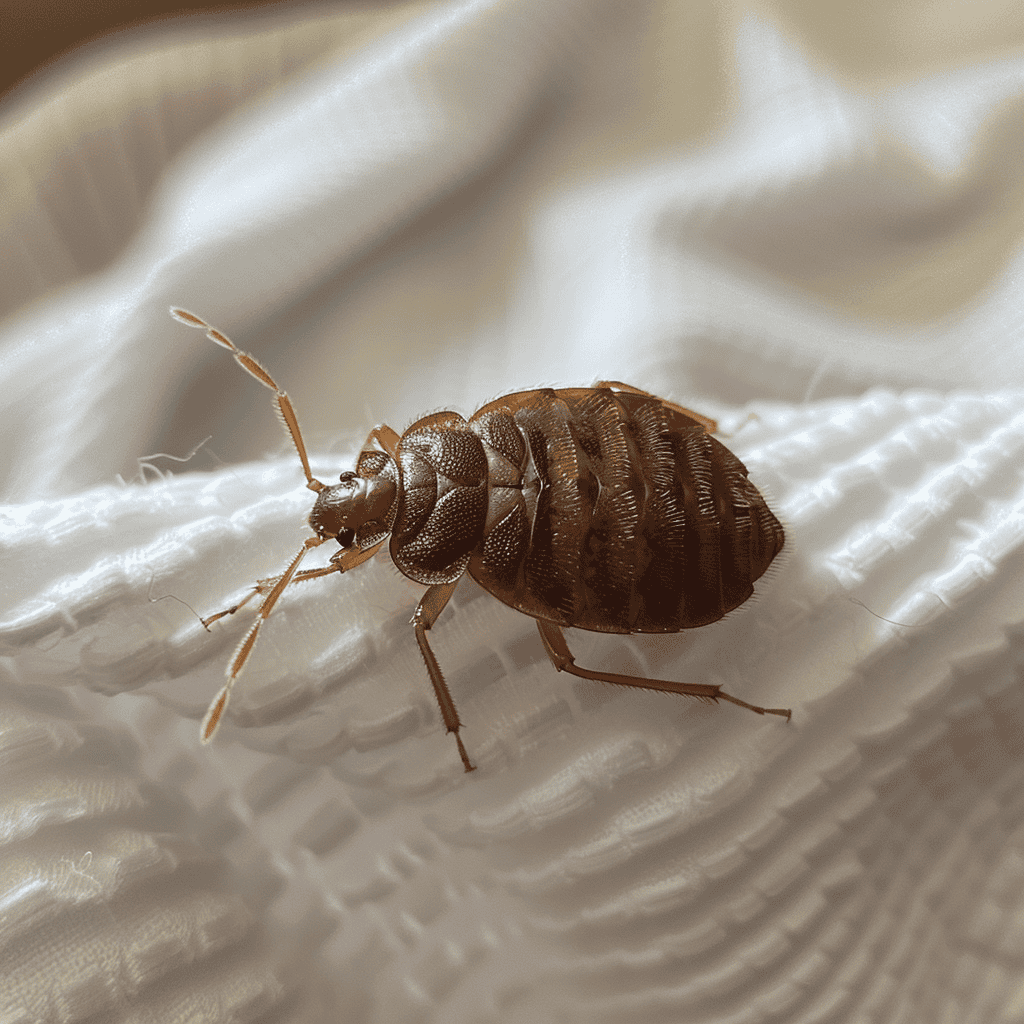Bedding / Sleep Advice
What Do Bed Bugs Look Like?
Have you ever seen a small, brownish insect that looks like an apple seed? Perhaps you spotted it in your bed or on your jumper. Wherever you saw it, this may have been a bed bug. These small critters have been infiltrating our homes for decades and biting us in our sleep. It sounds like something out of a horror film, right?
Unfortunately, bed bugs are an extremely common pest that bothers many of us across the globe. Luckily, there are two ways to stop them: prevention and treatment. But the only way you can do either is to know what they look like. So, in this article, you’ll learn the exact appearance of bed bugs so you can identify them if they show up in your home.
What Do Bed Bugs Look Like?
If you’ve been asking, “Can you see bed bugs?” the simple answer is yes. Adult bed bugs are around 5 mm long, so they’re visible to the naked eye. They have a muddy red colour, verging on brown, but sport a darker hue after they’ve eaten.
Bed bugs tend to have fairly flat bodies, allowing them to fit in cracks and crevices in beds, walls, furniture, and clothing. However, they’re fatter once they’ve eaten, as their bodies swell.
We mentioned apple seeds earlier, and this describes a bed bug down to a T. If you saw a bed bug at a quick glance, you may mistake it for an apple seed. However, on closer inspection, you’ll also notice their legs and antennae. They have six legs that typically look shorter than most insects and two antennae that look like minute beads. Much to most people’s surprise, bed bugs have wing pads, which you can see if you want to get really close to one. Despite their wing pads, they don’t fly, only crawl.

What Do Bed Bug Eggs Look Like?
It’s also possible to spot bed bug eggs on places like your mattress and bed frame. These look slightly different to adult bed bugs.
In the first stage of their life cycles, bed bugs are an egg. They’re laid by the female bed bug after she consumes human or animal blood.
Bed bug eggs are generally difficult to spot because of their size and similar appearance to pieces of fluff and dust. They tend to be white and small, at around 1 mm in length.
When the eggs hatch, they form nymphs. These are typically colourless, having an almost translucent appearance, making them harder than bed bug eggs to spot. However, as they grow into adults and moult, they take on a light brown colouration.
What Do Bed Bug Bites Look Like?

Bed bugs are nocturnal insects, so they hide themselves away during the day before sneaking out at nighttime. Fortunately for them (but unfortunately for us), this can give them free rein to bite us overnight, as we’re less likely to feel them or swat them away when we’re asleep.
It’s easy to mistake bed bug bites for other insect bites. They have the characteristic appearance of an insect bite – they produce round, red bumps that tend to be extremely itchy. However, bed bug bites differ from, say, a mosquito or flea bite in their cluster formation. Bed bugs tend to bite us more than once while we sleep but don’t travel far. So, this leaves a little cluster of red bumps all around the same spot. This characteristic is what distinguishes bed bug bites from other insects.
While bed bug bites can be incredibly irritating due to their itchiness, you’ll be pleased to know that bed bugs don’t carry diseases. So, unless you are allergic to their bites, all you will suffer from is a minor annoyance (and the anxiety of knowing these little critters live in your home!).
Where Do Bed Bugs Come From?
If you visit most places in the world, you’ll find bed bugs. Bed bugs appear to occur anywhere, regardless of a place’s environmental conditions or socioeconomic status. They have become particularly prevalent in recent years as their immunity to various common pesticides has evolved.
Nowadays, it’s common for bed bugs to reside in public places such as offices and cinemas, as well as many forms of transportation, like trains, buses, and tubes. They also often live in guest accommodation, such as hotels.
Unfortunately for us, bed bugs are skilled hitchhikers, so when we go to places they live, they can cling onto our clothing, bags, and belongings and get a free ride to our homes. This is how they end up on our clothing, in our beds, and on our furniture.
If you manage to escape this route, bed bugs can also travel into our homes when we have guests over or when we shop at second-hand stores, as clothes and furniture that have had previous homes before ours may be infested.
But even if they do enter our homes, what makes them crawl towards our beds? Well, bed bugs are drawn to us through the carbon dioxide we exhale. So, when we’re nestled up in bed at night, this draws them ever nearer.
Final Word on What Bed Bugs Look Like
Bed bugs are small, brownish insects that look strikingly similar to apple seeds. They are prevalent all over the world, being classed as a common pest worldwide. They typically enter our homes by using their hitchhiking skills, using our clothes, furniture, and belongings as their ride.
To be able to prevent bed bugs from entering our homes or treating them if they do, we need to know what they look like. Once we know how to recognise these little critters and the clusters of bites they leave on our skin, we can fully protect ourselves from them.

